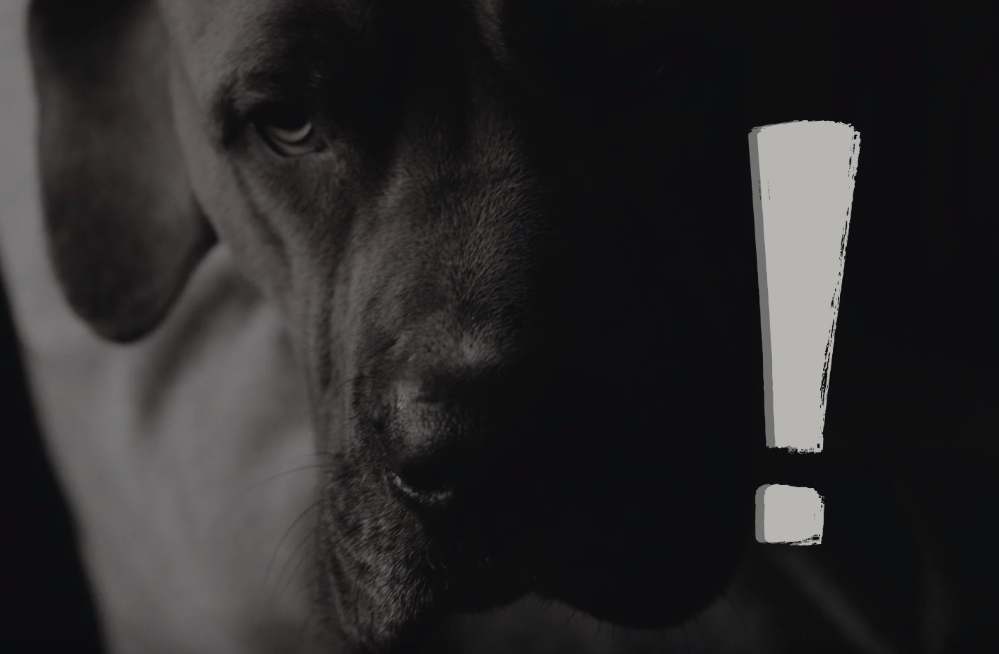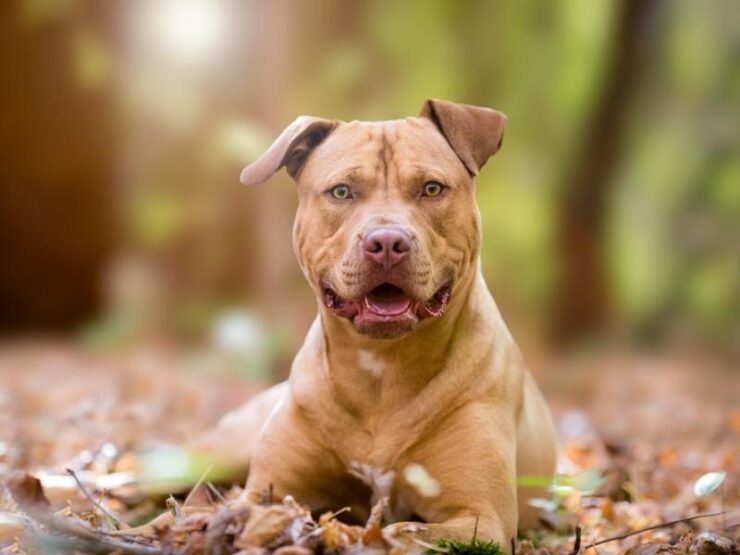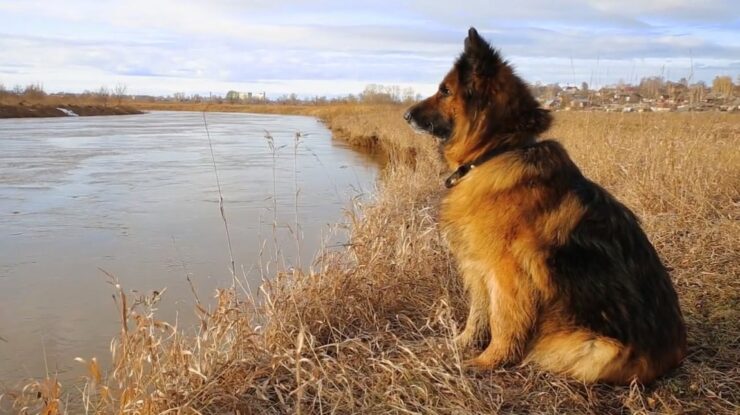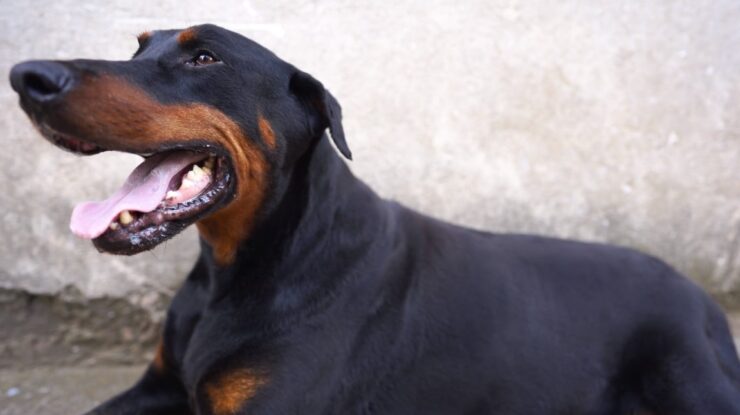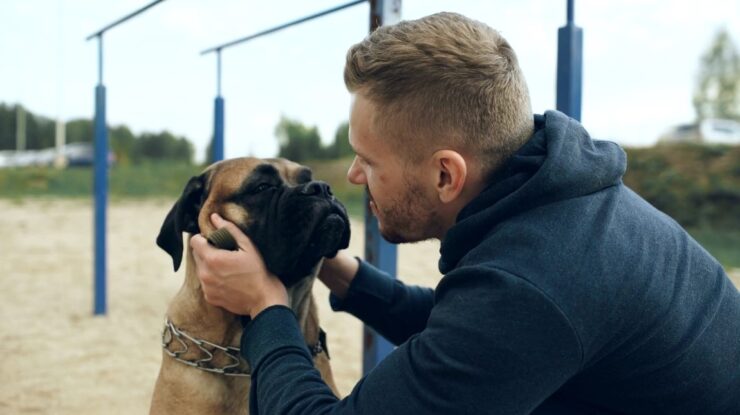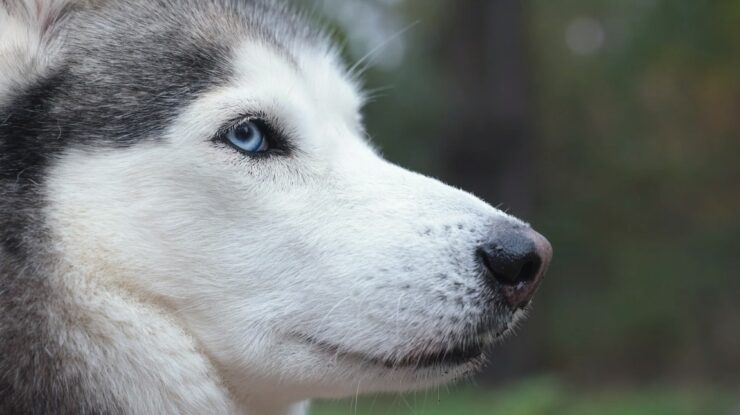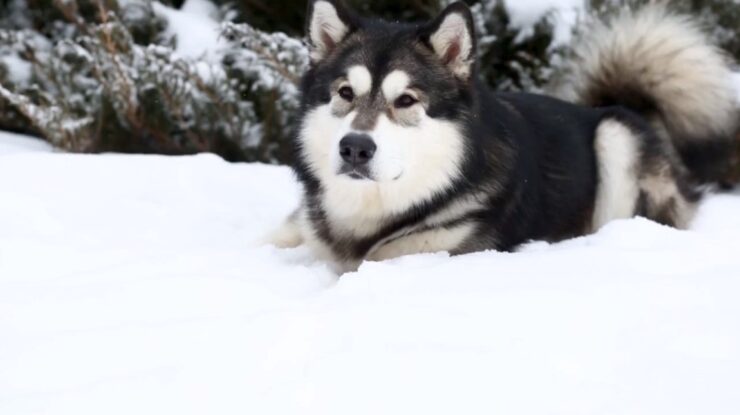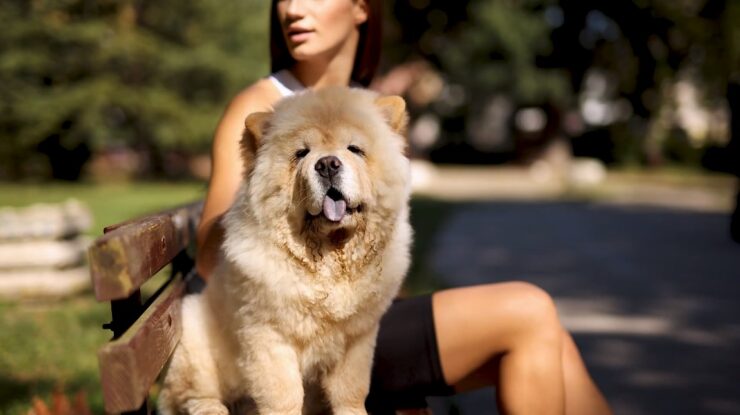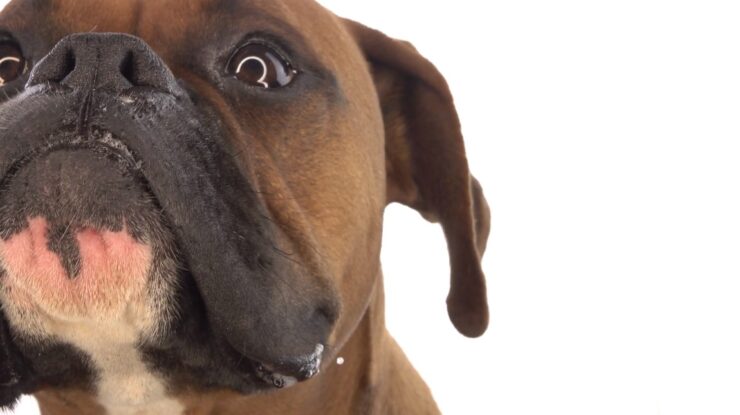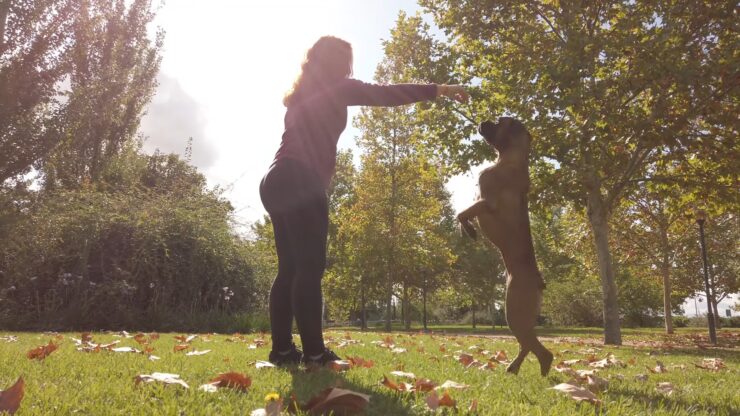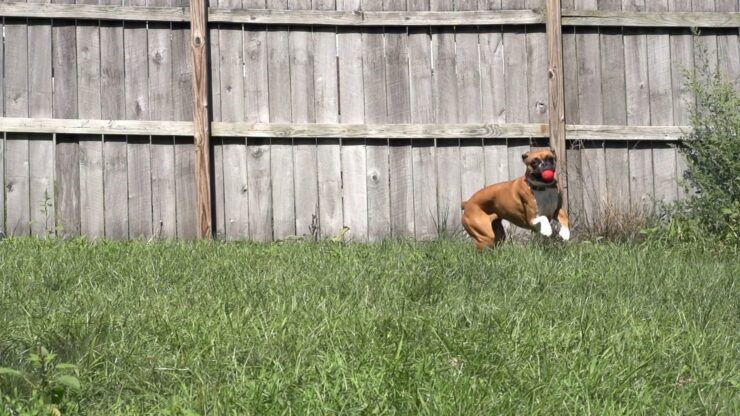Certain dog breeds possess characteristics that make them more prone to aggression and pose a risk to humans or other animals. These breeds may have been historically bred for certain purposes, but their physical and behavioral traits make them more dangerous in modern society.
It is essential to understand their inherent nature and what makes them risky and rare pets.
While owning such a breed isn’t inherently wrong, potential owners should conduct extensive research before making a commitment. Research urges caution when selecting dog breeds with an increased probability of causing harm and injury.
| No. | Breed | Average Weight | Notable Characteristics |
|---|---|---|---|
| 1. | Pit Bull Terrier | 30-85 lbs | Powerful, protective, often misunderstood due to poor ownership and media portrayal |
| 2. | Rottweiler | 80-135 lbs | Protective, can be aggressive if not properly socialized |
| 3. | German Shepherd | 50-90 lbs | Intelligent, protective, used in many forms of work including police and military |
| 4. | Doberman Pinscher | 60-100 lbs | Highly intelligent, protective, can be aggressive if not properly trained and socialized |
| 5. | Bullmastiff | 100-130 lbs | Powerful, protective, but generally gentle unless provoked |
| 6. | Boxer | 55-70 lbs | Energetic, strong, can be protective |
| 7. | Akita | 70-130 lbs | Protective, can be aloof with strangers, strong prey drive |
| 8. | Great Dane | 110-175 lbs | Large size, can be protective, generally gentle |
| 9. | Siberian Husky | 35-60 lbs | Independent, strong prey drive, can be a bit aloof |
| 10. | Alaskan Malamute | 75-85 lbs | Powerful, strong prey drive, independent |
| 11. | American Bulldog | 60-120 lbs | Strong, protective, requires proper socialization |
| 12. | Belgian Malinois | 40-80 lbs | Highly intelligent, used in police and military work, can be protective |
| 13. | Staffordshire Bull Terrier | 24-37 lbs | Strong, protective, often misunderstood |
| 14. | Cane Corso | 88-110 lbs | Protective, powerful, requires proper socialization |
| 15. | Chow Chow | 45-70 lbs | Aloof with strangers, can be protective |
| 16. | Presa Canario | 80-115 lbs | Powerful, protective, can be aggressive if not properly socialized |
| 17. | Rhodesian Ridgeback | 70-85 lbs | Independent, can be protective, strong prey drive |
| 18. | Saint Bernard | 120-180 lbs | Large size, generally gentle but can be protective |
| 19. | Dalmatian | 45-70 lbs | Energetic, can be protective, requires socialization |
| 20. | English Bulldog | 40-50 lbs | Can be protective, generally good-natured |
Insightful Data on the Current Hazardous Dog Breeds
Research reports indicate specific dog breeds typically associated with increased dangers in the past six years. These include Pit Bulls, Rottweilers, German Shepherds, Doberman Pinschers, Alaskan Malamutes, Chow Chows, Perro De Presa Canario (Canary Mastiff), Akitas, Great Danes and Huskies. Each dog breed’s unique temperament traits must be considered before committing to ownership.
Meet the top contenders for the ‘Most Likely to Bite Your Face Off’ award in 2024: the Rottweiler, Pit Bull, and Doberman – giving parents one more thing to worry about besides college tuition.
So, which one is the most dangerous?
To understand the most dangerous dog breeds in 2024, you need to be aware of the potential risks that come with owning some of these breeds.
The American Pit Bull Terrier, Rottweiler, German Shepherd, Doberman Pinscher, Bullmastiff, Siberian Husky, Alaskan Malamute, Chow Chow, Presa Canario, and Boxer are among the breeds that pose the greatest risk. In the following subsections, we will briefly discuss each breed’s potential danger and what steps you can take to ensure you’re prepared for ownership.
American Pit Bull Terrier
This breed, known for its strength and loyalty, has gained a bad reputation due to its potential for aggression. Unfortunately, irresponsible breeding and training have contributed to an increase in attacks on humans and other animals.
Pit Bulls need experienced owners who can provide proper socialization and training to prevent aggressive behaviors. The American Pit Bull Terrier requires early training with consistent socialization because of their history bred for bull baiting. They may become aggressive if not properly trained.
It is important to note that not all Pit Bulls are dangerous or aggressive. Many are loving and affectionate pets when raised properly. However, the breed’s physical strength and protective instincts can result in unintentional harm if they feel threatened or provoked.
The American Pit Bull Terrier is not recommended for first-time dog owners or families with small children. Owners should be aware of their breed-specific tendencies and take proper precautions to ensure the safety of those around them.
If you are considering adding an American Pit Bull Terrier to your family, it is essential to do thorough research and find a responsible breeder who prioritizes temperament testing and socialization. Additionally, proper training from an early age will help prevent any unwanted behaviors from developing.
Don’t miss out on the importance of raising your pet responsibly; considering all factors before bringing them into your home is imperative for both their well-being and those around them.
Don’t let the Rottweiler’s size fool you, they may have a heart of gold, but they also have jaws that can break bones like it’s nobody’s business.
Rottweiler
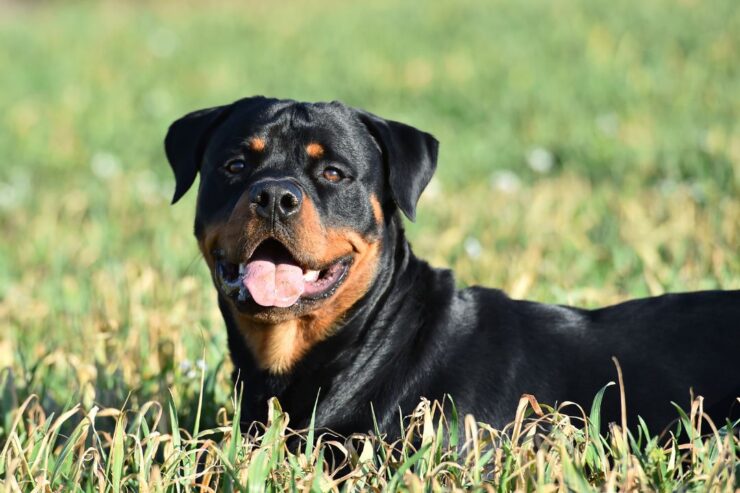
Rottweilers are powerful dogs that can inflict serious harm when provoked. They have strong jaws with a bite force of 328 psi, making them capable of crushing bones. Their territorial nature makes them overly protective of their families, and they may lash out at strangers.
So, even if you love dogs, being bitten by one, such as a Rottweiler, necessitates hiring a lawyer. They bring essential legal expertise to navigate complex laws and establish liability, whether it’s the dog’s owner or another party. They also work tirelessly to ensure you receive fair compensation for medical expenses, lost wages, and emotional distress. Having a lawyer, and you can find a good one if you click here, allows you to focus on recovery, secure in the knowledge that your case is being handled by a professional who understands the intricacies of dog bite cases.
Despite this, with proper training and socialization, Rottweilers can be friendly companions.
It is essential to remember that not all Rottweilers are aggressive or dangerous. Like any other breed, their behavior depends on how they are raised and trained. A well-trained Rottweiler can be a loyal and loving companion.
A young couple adopted a Rottweiler puppy named Sadie, who quickly became the love of their lives. Over the years, Sadie grew into a gentle giant who loved to play and cuddle but also had a fierce side when she sensed danger. One day while walking in the park, Sadie suddenly stopped in her tracks and growled at an approaching stranger. The couple was taken aback but then noticed the man had a knife concealed in his hand. Thanks to Sadie’s keen senses and protective nature, they were able to avoid harm’s way.
Don’t underestimate the cleverness of a German Shepherd, they may look cute and cuddly, but they can bite you harder than your ex on social media.
German Shepherd
This breed is known for its loyalty and protective nature. However, German Shepherds possess a high level of aggression towards strangers and other animals. They require intensive obedience training to control their dominance. With improper socialization, they can act violently even towards family members. German Shepherds are also prone to health issues like hip dysplasia.
A key aspect that sets German Shepherds apart as a dangerous dog breed is their strength and size. They have a muscular build with sharp teeth that can cause serious harm. Additionally, their territorial instincts often lead to aggressive behavior if someone intrudes on what the Shepherd perceives as its property.
German Shepherds need proper care and attention, especially during adolescence when they can become increasingly dominant and difficult to handle. Early training, positive reinforcement, secure fencing and controlled socialization can help deter violent tendencies in this breed.
According to the American Veterinary Medical Association, German Shepherds rank second in dog bite fatalities in the United States between 1979-1998 (AVMA).
Better watch your back when walking a Doberman Pinscher, because this breed is more protective than Liam Neeson in Taken.
Doberman Pinscher
This breed of dog, traditionally known as a fierce guard and protector, is the Doberman. Bred in Germany in the late 19th century, these muscular dogs are highly intelligent but require extensive training and socialization. Their protective instincts make them wary of strangers, making early socialization crucial for their behavior. As with any large breed of dog, they can be dangerous if not trained correctly. It is important to exercise caution when approaching unfamiliar Dobermans.
It is worth noting that while Dobermans may have a reputation for being dangerous, they are often quite affectionate with their owners and loyal companions. They have a sleek black or red coat and tend to be high-energy dogs that require plenty of exercise.
In terms of unique characteristics, one noteworthy aspect of Dobermans is their tendency toward health problems such as hip dysplasia and heart issues. Additionally, some experts recommend against keeping them in households with very young children due to their natural protectiveness.
Pro tip: To ensure your Doberman stays healthy and safe around others, consider enrolling them in obedience classes from a young age. This will help you establish trust with your dog while also teaching them how to behave around strangers and other animals.
Looking for a dog that can double as a guard and a cuddle buddy? Look no further than the Bullmastiff: the perfect breed for both protecting your home and hogging the couch.
Bullmastiff
This breed, known for its loyalty and strong presence, is a cross between an English Mastiff and a Bulldog. Originally bred to protect estates, their muscular build and guarding instincts make them capable of being protective but also potentially dangerous if not trained properly.
As bullmastiffs are often used as guard dogs due to their size and strength, they require extensive socialization with both humans and other animals from an early age. Owners must be well equipped to handle their natural territorial tendencies and aggression towards strangers if they perceive a threat.
Additionally, Bullmastiffs have been known to have large appetites and can become overweight without proper exercise and diet regulation.
Research shows that bullmastiffs are responsible for 6 fatalities in the United States from 2005-2017 (AVMA).
As cute as they are, you might want to think twice before challenging a Siberian Husky to a game of tug-of-war…unless you enjoy getting your arm ripped off.
Siberian Husky
This breed is infamous for their striking appearance and wolf-like resemblance. Here are some points that showcase the behavior of this particular breed:
- Siberian Huskies are known to be escape artists and may run away if not fenced properly.
- They possess high levels of energy and require regular exercise to prevent destructive behavior.
- Siberian Huskies have a strong prey drive which may lead them to chase small animals.
- They tend to show stubbornness during training sessions, making them difficult to train at times.
In addition, it’s worth noting that Siberian Huskies have a thick double coat and require regular grooming. To mitigate any dangerous behavior, owners may need to invest in obedience classes or consult with an experienced trainer when addressing any behavioral concerns.
As a suggestion, it’s recommended to provide ample physical activity through long walks or runs alongside opportunities for mental stimulation with interactive toys or puzzles. Consistent training while rewarding good behavior can reinforce leadership and address any potential aggression issues.
Better keep a fire extinguisher around if you’re going to mess with an Alaskan Malamute – those furry beasts can ignite a room just by giving you the side-eye.
Alaskan Malamute
This breed, known for its great strength and endurance, is the Arctic’s native worker. Despite their friendly nature, Alaskan sled dogs can become agitated and defensive when not properly trained. They can weigh up to 85 pounds and are bred to pull hefty loads through harsh terrain. Because of their history, any Alaskan Malamute may be potentially dangerous if their natural instincts are triggered.
When dealing with this breed, it’s important to remember that they are powerful and active creatures with a tremendous amount of energy. Without proper training and exercise, they may become restless and unleash the innate aggression in them. It’s essential for owners to develop a strong bond with their Malamutes through regular exercise and mental stimulation training from an early age.
Alaskan Malamutes pose a high risk of inflicting injury if handled by inexperienced owners or those who cannot provide sufficient physical activity for this breed’s instincts. It’s recommended for potential owners to seek professional help before adopting this breed.
A friend once shared with me his experience with a 4-year-old Malamute named Thor. Despite receiving obedience training at an early age, Thor escaped from his fenced yard while his owner was away at work. The dog went on a rampage in the neighborhood until he was eventually caught by animal control officers after injuring several people on site. Remember – proper training and containment are crucial for any dog’s safety and others around it.
If you’re looking for a furry bodyguard, the Chow Chow might just be your cup of chai tea.
Chow Chow
This breed, known as a ‘lion dog’, has a muscular frame and a dense coat. The Chow Chow is recognized for its blue-black tongue, giving it a distinct appearance. Aggression towards other dogs and humans can arise with insufficient socialization at a young age.
| Chow Chow |
|---|
| ———————– |
| Height: 46-56 cm |
| Weight: 20-32 kg |
| Lifespan: 9-15 years |
Additional to their aggressive tendencies, they are also quite stubborn in nature. These dogs require a strong-willed owner who can provide proper training and discipline. Their thick coat requires regular grooming, which needs to be maintained regularly.
Do not miss the significance of understanding the potential risks of owning this breed. Ensure you obtain sufficient information and evaluate if you and your family can manage its care before adopting one.
Never underestimate the Presa Canario, unless you enjoy being tackled by a furry freight train with jaws that could crush diamonds.
Presa Canario
Looking into the most dangerous dog breeds, we come across a breed known as the Canary Mastiff, or Presa Canario. This breed originates from the Canary Islands and is known for its size and strength.
A table depicting the characteristics of the Presa Canario reveals that they can grow up to 26 inches tall and weigh between 80-120 pounds. They have a thick muscular build, short coat, and are recognized by their brindle or fawn color patterns. The temperament of this breed is often deemed aggressive and has been known to display dominant behaviors in households.
In addition to being territorial towards strangers, Presa Canarios require ample training and socialization from their owners. If not received properly, there is an increased risk of these dogs becoming aggressive towards other animals or humans.
A 2018 report by DogsBite.org highlights that this breed was responsible for six fatalities from 2005-2017 in the United States alone. It’s important for potential owners to thoroughly research breeds before considering ownership to ensure proper care and management.
Boxers may be cute, but trust me, they pack a punch harder than a heavyweight champion.
Boxer
The breed known as the “Muscular Fighter” is a well-known dog species that originated in Germany. The Boxer breed has been categorized as one of the most dangerous breeds in the world. This breed can generate over 800 pounds per square inch of pressure through its jaws, which indicates its sheer strength. Due to their protective nature, this breed tends to be aggressive with strangers or other dogs, making socialization and training essential.
In terms of behavior and temperament, Boxers are known for having aggressive tendencies towards non-family members or unfamiliar surroundings. Dog experts have recommended implementing supervisory protocols during socialization and ensuring proper handling techniques from an early age to keep aggression levels in check.
Additionally, although purebred Boxers are susceptible to specific health concerns such as orthopedic injuries and heart conditions, over-breeding and inbreeding can exacerbate these issues. Proper Breeding practices that focus on minimizing genetic health problems should always be a priority.
A study conducted by the American Veterinary Medical Association identified Boxers as being likely involved in biting incidents leading to severe injury. Properly trained handlers who understand their needs make environments safe when raising Boxers.
As reported by Dogtime.com in March 2021, a 6-year old boy was attacked by two boxers while walking with his family along Chippewa Street in Buffalo New York’s West Side neighborhood; he died later that week at the hospital due to severe head trauma caused during the attack.
Understanding the factors behind dog aggression is like navigating a minefield, except the mines have fur, four legs, and potentially deadly teeth.
Factors Contributing to Dog Aggression
To understand the reasons behind dog aggression, delve into the section ‘Factors Contributing to Dog Aggression’ with the article ‘Most Dangerous Dog Breeds in 2024’. The sub-sections, ‘Lack of Exercise and Socialization’, ‘Genetic Factors’, and ‘Human Aggression’ provide solutions for different contributing factors causing dog aggression.
Lack of Exercise and Socialization
Insufficient physical activity and limited opportunities for socialization can be one of the contributing factors leading to aggressive behavior in dogs. The lack of exercise can cause boredom and frustration in dogs, which can result in destructive behavior and over-excitability. Along with this, insufficient interaction with other dogs and humans during the critical socialization period (between 3-14 weeks of age) may result in fear or aggression towards them later on.
Inadequate exercise routines also hinder the development of a dog’s social skills as they don’t get enough exposure to different situations, people, and animals. As a result, untrained dogs struggle to adapt to new situations or identify potential threats and may act aggressive towards perceived dangers. This issue is particularly common among breeds that have high levels of energy that require regular outlets through rigorous physical activities.
To overcome these issues, the owners must ensure that their dogs receive ample opportunities for socialization with other pets and people regularly. Implementing daily physical activity routines that involve structured playtime or regular walks in their routine helps channelize their energy positively resulting in calmer behaviour at home.
Studies have shown that dogs who grow up around generous amounts of socialisation leave a lasting impression on their psyche that reflects later on when older – making it crucial for owners to prioritize such exposure during puppyhood itself.
Looks like some pups have a genetic predisposition to being ruff around the edges. Time to blame their parents for their bad bark!
Genetic Factors
Research suggests that certain inheritable characteristics and traits may have an impact on the likelihood of a dog displaying aggressive behavior. These hereditary traits might include breed-specific tendencies towards aggression or protective instincts, as well as genetic predispositions to specific neurological or behavioral conditions. While genetic factors alone do not necessarily determine a dog’s propensity for aggression, they can pave the way for problems to emerge when combined with environmental influences and training practices.
In addition to breed-specific traits, research has also shown that certain individual genes may play a role in canine aggression. For example, variations in the serotonin transporter gene have been linked to increased impulsivity and increased reaction to stimuli, which in turn can contribute to aggressive reactions. Other genes that have been associated with aggression include those related to dopamine signaling and reward pathways, as well as those involved in regulating stress responses.
It is important to note that genetic factors are just one piece of the puzzle when it comes to understanding canine aggression. Environmental factors such as early socialization experiences, owner handling practices, and exposure to novel situations can significantly influence behavioral outcomes. In order to effectively manage and prevent aggressive behavior in dogs, it is necessary to take a holistic approach that considers both nature and nurture.
A historical example of the impact of genetics on canine behavior can be seen in studies involving foxes bred over several generations for different levels of tameness or aggression towards humans. The results showed significant changes in physical appearance and temperament as desired traits were selected for breeding over time, highlighting how tightly woven together biology and temperament can be in shaping animal behavior.
Human Aggression
In some cases, dogs exhibit aggression towards humans due to multiple factors, among them being the lack of socialization during their early years, a history of abuse or mistreatment, and fear or anxiety-triggered actions. Owners should ensure that their pets receive proper training and socialization in their developmental stages to curb the tendency for aggressive behavior towards humans.
Additionally, it is vital to understand dog body language since it may indicate discomfort or signs of impending aggression.
Moreover, owners should avoid punishing dogs for showing aggressive behavior since this may only exacerbate the situation. Instead, seek help from a professional trainer or veterinary behaviorist who specializes in animal aggression treatment. Treating dog-to-human aggression involves conducting a physical exam to rule out underlying medical issues and behavioral assessment.
Studies have shown that the majority of reported dog bite incidents resulting in human fatalities occurred due to unneutered male dogs living with chain tethering outdoors and no human socialization. Centers for Disease Control and Prevention (CDC) recommend neutering, proper supervision, and socialization as essential strategies to reduce dog bites among humans.
Remember, even the most aggressive dog can be tamed, just like your ex who suddenly became a vegan yoga instructor.
What dog has the most dog attacks?
| No. | Breed | Estimated % of Total Reported Attacks |
|---|---|---|
| 1. | Pit Bull | 22% |
| 2. | Rottweiler | 11% |
| 3. | German Shepherd | 9% |
| 4. | Mixed Breed | 9% |
| 5. | Bullmastiff | 6% |
| 6. | Boxer | 5% |
| 7. | Labrador Retriever | 5% |
| 8. | Husky | 4% |
| 9. | Mastiff | 4% |
| 10. | Akita | 4% |
The dog breed most commonly reported in fatal human attacks in the United States was the Pit Bull. However, it’s important to note several key factors:
- Misidentification: Pit Bulls are often misidentified, and any muscular, short-haired dog might be labeled as a “Pit Bull”. This can skew statistics significantly.
- Population Size: There are a lot of Pit Bulls and Pit Bull mixes, which can make it seem like they bite or attack more often simply because there are more of them.
- Ownership and Training: Unfortunately, Pit Bulls are often chosen by irresponsible owners who encourage aggression for illegal dog fighting or as a status symbol. When raised in a loving, responsible environment, Pit Bulls can be as gentle and well-behaved as any other breed.
What dog bites the hardest?
Dog bite strength is often measured in pounds per square inch (PSI) of pressure. The Kangal, a breed of large livestock guardian dog from Turkey, is believed to have the highest bite force at around 743 PSI.
Here are a few breeds with notably high bite forces:
- Kangal: 743 PSI
- English Mastiff: 556 PSI
- Wolfdog: 406 PSI
- Rottweiler: 328 PSI
- African Wild Dog: 317 PSI
- American Bulldog: 305 PSI
- Doberman: 245 PSI
- German Shepherd: 238 PSI
- American Pitbull: 235 PSI
- Labrador Retriever: 230 PSI
Why Are Some Dog Breeds More Aggressive and Likely to Attack?
There are several factors that can contribute to the perceived aggression in certain dog breeds:
- Genetics: Some breeds have been selectively bred for certain traits, such as guarding, protection, or hunting. These traits might make them more likely to display aggressive behaviors if not properly managed and directed.
- Socialization: Dogs that are not adequately socialized during their early months might develop fear or aggression towards other animals or people. This is because they have not been exposed to a variety of experiences and situations and, therefore, can react negatively to new things.
- Training: A lack of proper training can lead to behavior problems, including aggression. Dogs that are not taught appropriate behavior or who are encouraged to behave aggressively may be more likely to act out.
- Environment and Ownership: Dogs that are abused, neglected, or poorly treated are more likely to show aggression. The way a dog is raised and treated can have a significant impact on its behavior.
- Health Issues: Medical problems, including some genetic conditions, can cause or contribute to aggressive behavior in dogs. Pain, discomfort, or illness can make a dog more irritable or fearful, which can lead to aggression.
- Fear and Anxiety: Dogs that are anxious or fearful can display aggression as a defensive mechanism. This can be due to a lack of socialization, past traumatic experiences, or an inherently nervous disposition.
Conclusion
After examining various factors such as aggression, bite strength and history of attacks, it can be concluded that certain dog breeds are on the list of the most dangerous breeds in 2024. These breeds include Pit Bulls, Rottweilers, German Shepherds and Akitas. It is important to note that breed alone does not determine a dog’s temperament or behavior.
The aggressive tendencies of these breeds can often be attributed to poor breeding practices and inadequate training and socialization. Responsible ownership and proper training can help mitigate the risk of incidents involving these breeds. Additionally, it is crucial to recognize and report any signs of abuse or neglect towards dogs of these breeds.
Providing resources for education and training on responsible dog ownership can reduce the likelihood of dogs becoming overly aggressive. Awareness campaigns that promote responsible pet ownership can also be effective in mitigating negative perceptions about certain dog breeds. By focusing on prevention rather than punishment, we can work towards creating safer environments for both humans and animals alike.
Frequently Asked Questions
1. Why are Pit Bulls considered a dangerous breed?
Pit Bulls are considered dangerous because they were originally bred for fighting. They have a strong bite force and can be unpredictable if not trained and socialized properly.
2. What makes Rottweilers dangerous?
Rottweilers are powerful dogs that can become aggressive if they feel threatened or if they are not properly trained. They are known for their protective nature and territorial instincts.
3. Are Doberman Pinschers aggressive?
Doberman Pinschers can be aggressive if they are not properly socialized and trained. They were originally bred as guard dogs and have strong protective instincts.
4. What traits make German Shepherds potentially dangerous?
German Shepherds are very strong and intelligent dogs. They can become aggressive if they are not properly trained and socialized. They are often used as police dogs because of their quick response and ability to be trained for specific tasks.
5. Why are Siberian Huskies and Alaskan Malamutes considered dangerous?
Siberian Huskies and Alaskan Malamutes can be dangerous if they are not properly trained and exercised. They were originally bred as sled dogs and require a lot of physical activity. If they don’t get enough exercise, they can become destructive and aggressive.

